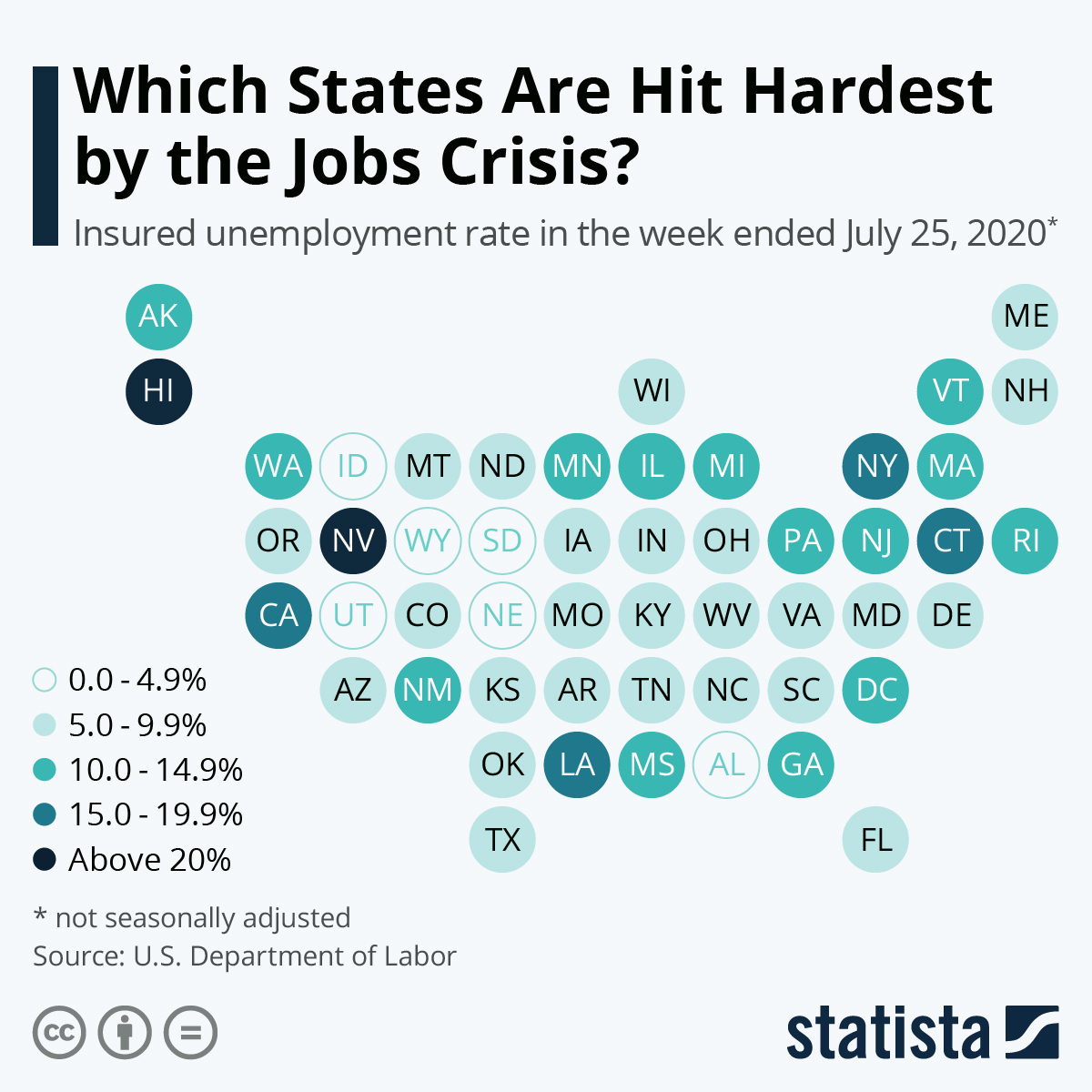With initial jobless claims falling below 1 million for the first time since March and the insured unemployment rate gradually declining from its May peak of 15.6 percent to 10.4 percent in the week ended August 1, the U.S. job market is at last showing tentative signs of recovery. Make no mistake, the jobs crisis is still far from over, but the signs are finally pointing in the right direction.
In a country as heterogenic as the United States, it’s one thing to look at nationwide jobless figures, but it’s important to keep in mind that the situation differs widely across state lines. According to the latest data from the Department of Labor, the insured unemployment rate ranged from just 3.4 percent in Idaho to 23.6 percent in neighboring Nevada for the week ended July 25.
The following chart provides a rough overview of the employment situation across the 50 states and the District of Columbia, illustrating that no clear geographic trend can be observed and that very few states have been spared by pandemic’s devastating effect on the labor market.
It’s important to note that this chart shows the weekly reported insured unemployment, which is the number of people currently receiving unemployment insurance as a percentage of the labor force. As opposed to the conventional unemployment rate, which includes those who report that they are not employed but searching for work, insured unemployment leaved out the long-term unemployed, who may no longer qualify for unemployment assistance.




















